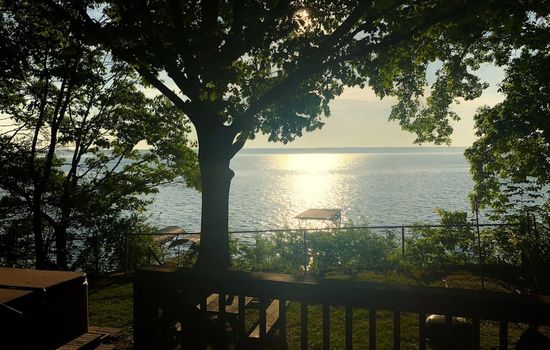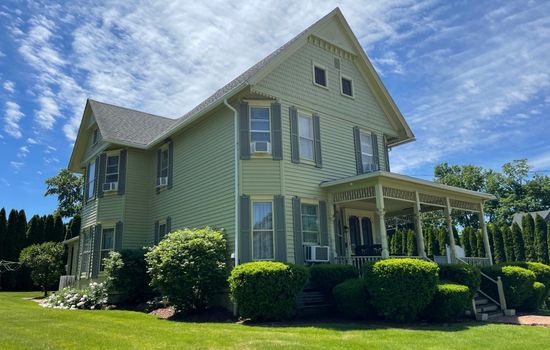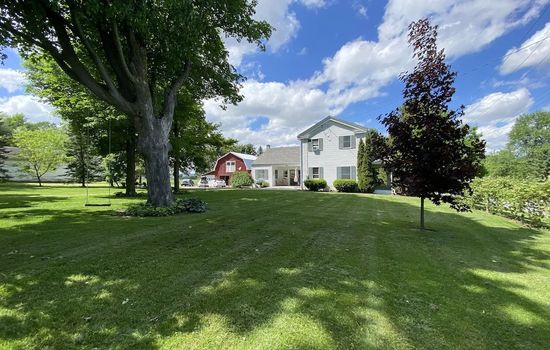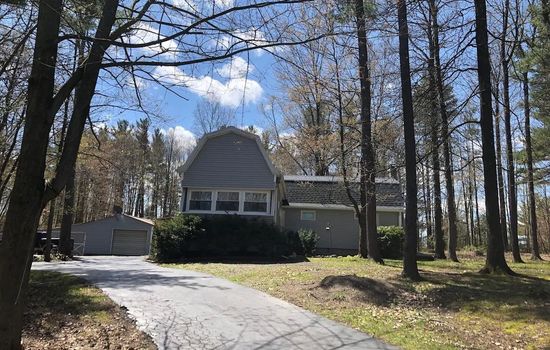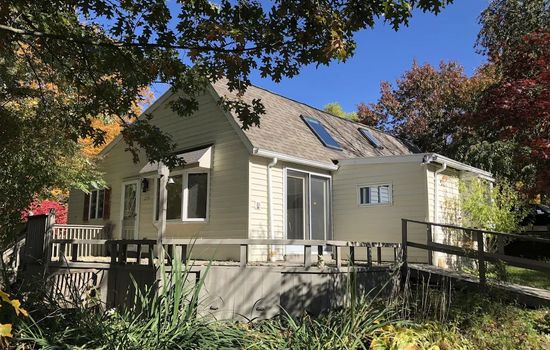The visitor center at Women’s Rights National Historical Park is open Tuesday through Saturday from 10am to 4pm. It is closed on Sundays and Mondays.公園assistant
The visitor center at Women’s Rights National Historical Park is open Tuesday through Saturday from 10am to 4pm. It is closed on Sundays and Mondays.
There is no entrance fee to visit Women’s Rights National Historical Park. Admission is free for everyone.
From Rochester, take I-90 E to Exit 41, then NY-414 S to Seneca Falls, immerse yourself in the birthplace of the women’s suffrage movement.
Parking is available behind the Visitor Center and at the Elizabeth Cady Stanton House. Additional 2-hour parking is along Fall, Clinton, and Mynderse Streets. No specific RV or motorcycle parking mentioned; no overnight parking permitted; no parking fees indicated.
Accessibility & permits
Emergency
- Cell service availability:Full
Information not accurate?
Help us improve by making a suggestion.
In the heart of New York’s Finger Lakes region, the Women’s Rights National Historical Park stands as a poignant testament to the struggle for equality and human rights. Located in Seneca Falls and Waterloo, this historical site is not about lakes or wildlife, but it is a place where the landscape of history was forever altered.
The park’s centerpiece is the Wesleyan Chapel, a modest yet powerful structure where the first Women’s Rights Convention took place on July 19-20, 1848. Here, visionaries like Elizabeth Cady Stanton, Susan B. Anthony, and Lucretia Mott gathered to sign the Declaration of Sentiments, a document that declared all men and women are created equal.
Visitors can walk through the homes of these pioneers, including the Elizabeth Cady Stanton House and the M’Clintock House, each a window into the lives of those who fought tirelessly for suffrage. The park’s visitor center and education and cultural center offer a deeper dive into the movement’s history.
While the park itself is not a nature reserve, its surroundings in the Finger Lakes region are replete with natural beauty. Nearby, the tranquil lakes and rolling vineyards provide a serene backdrop for reflection. In summer, the area comes alive with concerts and festivals celebrating local culture. For those seeking more than history, nearby towns like Seneca Falls offer charming artisan shops and local eateries.
Ranger-led tours provide insightful perspectives on the park’s historical significance, and special events such as reenactments of the convention bring the past to life. Though it may not be a traditional park with hiking trails or lake activities, the Women’s Rights National Historical Park is a must-visit for anyone seeking to immerse themselves in a pivotal moment of American history, surrounded by the quiet elegance of the Finger Lakes.
- Area (mi²)
- 0.1
- Annual visitors
- 34 294
- Established year
- 1980
Top 3 Facts about Women’s Rights National Historic Site
The Wesleyan Methodist Church, where the first women’s rights convention was held, had fallen into disrepair by 1980, with portions converted into a laundromat, a car garage, and apartments, highlighting the need for its restoration.
Amidst the historic landscapes, a mature horse chestnut, a Witness Tree, stands tall at the front of the Stanton property, a silent observer to the site’s rich history. The area is home to a diverse array of flora and fauna, though specific details on local wildlife are scarce. However, the surrounding Finger Lakes region is known for its vibrant ecosystems, including various bird species and aquatic life in its numerous lakes and rivers. This blend of natural beauty and historical significance creates a unique and immersive experience for visitors.
Surrounded by the serene landscapes of central New York, this historic site is set amidst the gentle slopes of the Finger Lakes region. The nearby Seneca Lake, one of the deepest of the Finger Lakes, boasts crystal-clear waters that reach depths of up to 618 feet, providing a stunning backdrop to the area’s rich historical significance. The mild climate and picturesque countryside make it an ideal destination for those seeking a blend of natural beauty and historical depth.
Family programs
- Junior Ranger
- Ranger-led Tours
- Self-guided Tours
- Workshops & Hands-on Activities
- Living History & Cultural Demos
- Scavenger Hunts
- Arts & Crafts
Travel Tips
Plan Ahead
Plan a 2-3 day visit in spring or summer to coincide with the Women’s Rights Convention anniversary. Arrive early, park near the Visitor Center, and prepare for walking on paved paths. Bring snacks and plan meals in nearby Seneca Falls. Rest often to fully absorb the historic sites and ranger programs.
Pack Appropriately
Pack layers for variable weather, sturdy shoes for hiking, and a waterproof jacket. For longer stays, bring a tent, sleeping bag, and camping stove. Check the season for specific gear needs.
Respect Wildlife
When visiting, maintain a safe distance from wildlife, at least 25 yards. Avoid feeding or disturbing animals, and respect their habitats. Keep roads clear and drive cautiously to prevent animal-vehicle collisions. Leave the area as you found it, disposing of waste properly and minimizing your impact on the environment.
Stay Informed
Stay on marked trails, avoid ledges and water areas, and check weather and fire alerts. For emergencies, call park authorities at 911 or the park’s emergency number. Stay informed, stay safe.
Seasons
Visit in spring for mild temperatures (50s-70s°F) and vibrant blooming landscapes. Attend Convention Days in July, commemorating the 1848 women’s rights convention, for a immersive historical experience. Ideal time to enjoy outdoor ranger talks and house tours amidst pleasant weather.
Visit in summer for warm temperatures (70s-80s°F) and humid days. Experience the Convention Days event in July, commemorating the 1848 women’s rights convention with living histories and interactive activities. A must-visit for history enthusiasts and those seeking meaningful summer experiences.
Visit in fall, when crisp temperatures (40s-60s°F) and vibrant foliage enhance the historic charm. Attend the annual Suffrage Wagon Festival in September, celebrating women’s rights with reenactments and lectures. Ideal time to immerse in the struggle for equality amidst autumn’s beauty.
Visit from December to March when crisp winters blanket the landscape in snow. Temperatures often dip below 42°F, but the serene beauty and historic significance make for a unique winter experience, despite limited hours and closed historic homes.
Information not accurate?
Help us improve by making a suggestion.
Where to stay
Frequently Asked Questions
Ready to dive into what Women’s Rights National Historic Site has to offer? Let’s tackle some of the burning questions you might have as you plan your visit!
-
The closest city to the historical site is Seneca Falls, New York, where the first Women’s Rights Convention was held in 1848. The site is also near Waterloo, New York, another significant location in the women’s suffrage movement.
-
Dogs must be on a leash and under the owner’s control at all times when outside their vehicle. Leashes cannot exceed six feet in length, and dogs are not allowed inside any public use buildings except for service animals. Owners must also clean up after their pets.
-
Parking is free at the site. There are no specific fees mentioned for parking.
-
The park celebrates the 1848 Seneca Falls Convention, the first women’s rights convention, held on July 19-20 in the Wesleyan Methodist Church in Seneca Falls, New York. This event, attended by over 300 people, including Elizabeth Cady Stanton, Susan B. Anthony, Lucretia Mott, and Frederick Douglass, led to the Declaration of Sentiments declaring all men and women are created equal. The park also honors the homes of key figures like Elizabeth Cady Stanton and other women’s rights activists.

